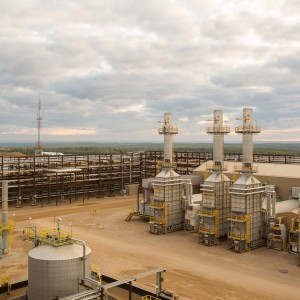Building a resilient strategy for the energy transition
Managing climate-related risks
In a world aiming for net-zero emissions, we have a robust climate-related risk framework consisting of strong governance, strategic capability, risk management processes and disclosure that will allow us to demonstrate resilience across a range of transition scenarios. The energy transition will be complex, with many possible pathways and uncertainties and likely to evolve at different times, at different paces, in different regions. We acknowledge the urgency and importance of limiting global average temperature increases and our actions are aligned with shareholder interests for long-term value and competitive returns. We employ our Climate Risk Strategy with an objective to manage climate-related risks, optimize opportunities and equip the company to respond to changes in key uncertainties, including government policies around the world, emissions reduction technologies, alternative energy technologies and changes in consumer trends. The strategy guides our choices around portfolio composition, emissions reductions, targets, incentives, emissions-related technology development, and our climate-related policy and financial sector engagement. Our goal is to support an orderly transition that matches supply to demand and focuses on returns on and of capital while safely and responsibly delivering affordable energy.
2023 performance highlights
- Published a progress report in the 2024 Proxy Statement on our Plan for the Energy Transition to describe key milestones achieved throughout 2023 as we manage energy transition risks and opportunities.
- Published a new net-zero scenario that models the global government and societal actions required to limit warming to 1.5 degrees.
- Improved our greenhouse gas (GHG) target framework and made progress against our existing targets:
- Accelerated our Scope 1 and Scope 2 GHG emissions intensity reduction target to 50-60% by 2030 on both a gross operated and net equity basis from a 2016 baseline.
- Progressed methane emissions reductions activities in support of our near-zero methane emissions intensity by 2030 (1.5 kg CO2e/BOE) and introduced data quality improvements.
- Remained on schedule to meet a target of zero routine flaring by the end of 2025, five years sooner than the World Bank Initiative’s goal of 2030.1
- Began developing total flaring intensity target for 2030.
- Spent approximately $350 million on Scope 1 and Scope 2 emissions reductions and low carbon opportunities in 2023 that are expected to result in approximately 0.8 million tonnes per annum (MTPA) in emissions reductions.2 An additional $300-400 million is allocated for spending in 2024.
- Participated in the Oil and Gas Methane Partnership (OGMP) 2.0 initiative to improve methane measurement and reporting transparency and achieved the Gold Standard Pathway for emissions reporting.
- Improved data quality, including corrected equipment counts and classifications, and expansion of flare downtime monitoring resulted in increased 2023 emissions intensity estimates compared to 2022:
- Scope 1 and Scope 2 gross operated GHG emissions intensity estimate increased to 25.3 kg CO2e/BOE.
- Methane intensity estimate increased to 4.8 kg CO2e/BOE.
- Flaring intensity estimate increased to 31.8 MMCF/MMBOE (total flaring volume per total production).
- Decreased routine flaring3 more than 90% since 2021.
- Progressed engagement with suppliers and commercial partners to address climate-related risks in our value chain.
- Advocated for an economy-wide U.S. carbon price that could address consumer energy demand patterns and end-use (Scope 3) emissions. Supported policy advocacy beyond carbon pricing to include other end-use emissions policy and regulatory actions, such as the direct federal regulation of methane and national policy recommendations to reduce GHG emissions from the U.S. natural gas value chain.
- Secured additional regasification capacity for liquefied natural gas (LNG) and signed new offtake agreements.
- Continued evaluation of energy transition and low-carbon technologies efforts, including carbon capture and storage (CCS) and hydrogen projects.
1. Per the World Bank’s Zero Routine Flaring by 2030 initiative, “Oil companies that endorse the Initiative will develop new oil fields they operate according to plans that incorporate sustainable utilization or conservation of the field’s associated gas without routine flaring. Oil companies with routine flaring at existing oil fields they operate will seek to implement economically viable solutions to eliminate this legacy flaring as soon as possible, and no later than 2030.”
2. Emissions reduction projects include both mandatory and voluntary projects.
3. Routine flaring is defined as flaring of associated gas that occurs during the normal production of oil in the absence of sufficient facilities to utilize the gas onsite, dispatch it to a market or reinject it. Flaring for safety reasons, non-routine flaring or flaring gas other than associated gas is not included as part of the World Bank Zero Routine Flaring Initiative.
In This Section
Governance framework

A comprehensive governance process.
Strategy

Climate-related risks integrated into strategic planning.
Risk management

Assessing and managing climate-related risks.
Performance metrics and targets

Key metrics and targets to measure and monitor our performance.
External collaboration

Gaining external perspectives.
Public policy engagement

Playing a constructive role in public policy dialogue.
Climate Risk Framework
Net-Zero Ambition by 2050
Progress report: Operationalizing our net-zero ambition
Climate Change Position
Our position guides our approach to managing climate-related risks.




